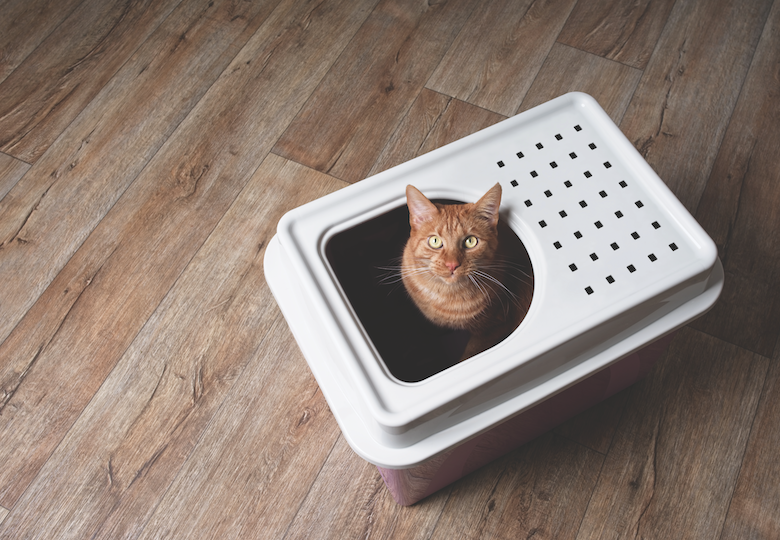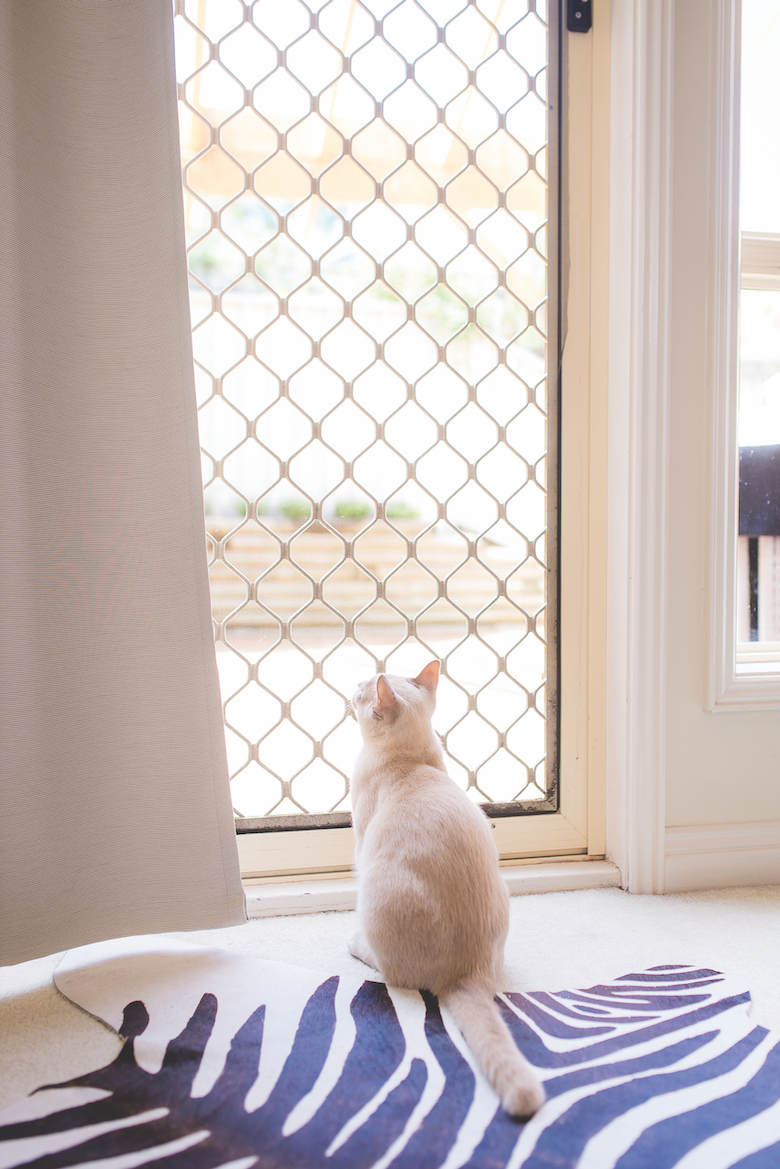We interviewed top feline experts to find out their favorite cat-care secrets for all life stages. Read on to learn how to manage the most common cat-care and behavior issues.

Photo: Lightspruch | Getty Images
Cat-care secrets for preventing litter box woes
Not using the litter box is at the top of the list of feline behavior challenges.
Set your kitten up for litter box success by keeping the box clean. “Scoop the box often (at least once a day!),” says Jackie Noble, kitten nursery manager for San Diego Humane Society’s 24-hour Kitten Nursery. “Kittens have a great sense of smell, so if they do have an accident make sure you clean the area thoroughly with a product like Nature’s Miracle so they don’t smell their way back to the scene of the crime.”
For adult cats, it’s all about size, location and number (hint: one is not enough!). “Most commercial litter boxes are not large enough,” says Dr. Aimee Simpson, medical director of VCA Cat Hospital of Philadelphia. She recommends using a box that’s one-and-one-half times longer than your cat. “I like using under-the-bed storage bins for this,” she says. “You should have one litter box for each cat, plus an extra one. Place boxes in a location with at least two routes of exit.”
Related: 6 Common Litter Box Issues — and How to Fix Them
Senior cats might have trouble getting in and out of the litter box, although you might not realize it.
“One study showed that 90% of [senior] cats had osteoarthritis, and these were cats that were not presented for pain,” says Dr. Lisa Radosta, a board-certified veterinary behaviorist with Florida Veterinary Behavior Service in West Palm Beach. “These cats came to the vet for something else. Older cats need low-lipped boxes, or entranceways into the box like a ramp, or cut a door [into the side of the box] with an X-ACTO knife.”

Photo: Claudiad | Getty Images
How to curb your cat’s fear and anxiety
Teach your kitten that the carrier isn’t a scary place so visits to the vet are less traumatic. “If you feed your kitten in their carrier and throw some toys in there, they will see it as part of their daily life,” Jackie says. “Consider finding a Fear Free vet clinic in your community. The techniques they use will ensure your kitten has positive experiences, and they will be less likely to be afraid of going to the vet.”
Enriching your cat’s environment can help ward off anxiety before it develops. “Anxiety often results from boredom,” Dr. Simpson says. “Increase vertical space using cat trees or wall shelves to allow cats to perch and hide. Provide access to windows so they can observe people and other animals. My own cat, Maeby, was leash-trained as a kitten and loves her walks outside.”
Dr. Radosta participated in a soon-to-be-published study that showed that a large percentage of cats have noise fear or phobia; for instance, when the gardeners come with lawn mowers or blowers. “At any age, running under the bed means your cat is scared,” she says. “Hiding is a coping mechanism. That is not OK! Do something to help your cat out.” If you know workers are coming, put your cat in an interior room and play some soothing music to drown out the scary sounds.
For some cats, especially older cats, their fear can’t be overcome. In these cases, ask your vet for a sedative to give your cat at home before you bring him to the vet. “If you have an adult cat who is already conditioned to respond with a full-blown panic attack, get some meds from your vet,” Dr. Radosta says. “Anxiety is on the tip of every veterinarian’s tongue. There is no excuse for not knowing what meds to prescribe to get a cat to the vet’s office.”

Photo: Nungning20 | Getty Images
Cat-care secrets for halting hairballs
The most important thing to know about hairballs is they are not something to ignore. “It’s not normal for cats to vomit hairballs, so if your cat is having hairballs regularly it could indicate an issue with gastrointestinal motility,” Dr. Simpson says. “One of my patients, Lilly, needed a trichobezoar (obstructive hairball) removed surgically twice! For occasional hairballs, petroleum jelly products like Laxatone can lubricate hair so it moves through more easily.” (Put these yummy pastes on your finger for the cat to lick off.)

Photo: Magone | Getty Images
How to stop biting and play aggression
Play with your kitten wisely, and watch for signs of aggressive behavior. “Avoid rough play using your hands,” Dr. Simpson says. “Instead, use toys that create distance, like balls you throw and fishing-pole toys, or encourage the kitten to play by himself with puzzle toys or battery-operated toys. If you see ears flattened, pupils dilated and tail swishing, startle the kitten with a noise deterrent (for example, a hissing noise from compressed air canister), redirect his attention with toys, and walk away. Reward cats with food treats or verbal praise for non-aggressive behavior.”
Engaging your cat in lots of daily play can keep him from attacking your legs or biting at your hands. “Don’t give your cat all their toys at once, or the toys will lose their novelty,” Jackie says. “Rotate them out so they get a new sense of fun each time they see them.”
Related: Why Playtime Helps You Bond With Your Cat
Finally, don’t try to touch your cat when he’s feeling feisty or wants something else from you like food. “Sometimes people pet their cats when the cat visually displays body language that is stating, ‘I didn’t want you to touch me,’” Dr. Radosta says. “We have to open our eyes and pay attention.”

Photo: Anidefor | Getty Images
How to nix those fleas and ticks
Keep your young kitten indoors to minimize fleas and other parasites. “Most flea and tick prevention can only be provided to kittens 8 weeks and older, so make sure to talk to your veterinarian and read the labels before administering flea treatment to your kitten,” Jackie says.
But indoor cats still do need parasite protection. “Even if your cat never leaves the house, you do — and you may bring these parasites into the house,” Dr. Simpson says. “They can also gain access through the house (for instance, mosquitoes coming in through window screens or fleas coming through basement windows) or using other animals like dogs to hitch a ride.”
Related: 4 Ways To Safely Give Your Indoor Cat a Taste of the Outdoors
Talk to your vet about the parasite protection that makes the most sense for your cat’s age, health and lifestyle.
Understanding and anticipating your cat’s needs will head off most behavior problems before they start. But the most important key to keeping your cat happy is also the simplest — lots of attention and affection from you.
Top photograph: Grafner | Getty Images
